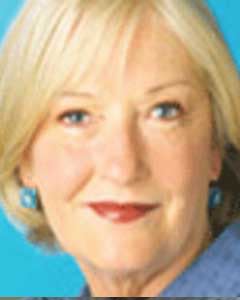Toronto
“We cannot sacrifice the next generation on the altar of our preferences,” said the Rev. Beth Fellinger, senior pastor at Destination Church, a new church plant in St. Thomas, Ont.
Fellinger, a keynote speaker at the Vital Church Planting conference, May 31 to June 2, said new forms of church allow whole new populations to access services formerly open only to restricted groups. “Sometimes we get too comfortable with what we have. We have to think outside the parameters of what is normal for us,” she said.
The growth of customized church plants, which, like Destination, are springing up around the country, are proof positive that the use of different approaches works. Destination started with a core team of 17 and now stands at more than 200 members, two-thirds of whom are under age 27. “We have business people and social assistance people and single moms sharing meals together, and 60 per cent of our members come from outside the church community,” said Fellinger. “It’s been an incredible journey.”
In another keynote address, “Put out to deep water and let down your nets,” the bishop of Sheffield, Stephen Croft, spoke about reaching out, becoming Luke’s fishers of people (5:5) and establishing Christ-like communities.
The former leader of Fresh Expressions in the U.K. said that it is not always clear what should be done and it is not wise to pretend that you have all the answers. “But I believe that conscious incompetence is far better than unconscious incompetence,” he said, describing himself as “a consciously incompetent bishop.” When the Archbishop of Canterbury, Rowan Williams, challenged church leaders to make mission-shaped church the norm within five years, “I set the ringtone on my cellphone to the theme from Mission Impossible and away we went,” said Bishop Croft.
In a third presentation, the team leader of Fresh Expressions Canada shared his vision for the contemporary Anglican church. It shines like an optical fibre lamp “…assembled from hundreds of filaments gathered together at the base and powered by a common source,” said the Rev. Nick Brotherwood, who prefers this dynamic image to the static bricks-and-mortar view of the church. “At this time we need to re-ignite our imagination about what it means to be church and generally place more emphasis on the ‘dispersal’ mode,” he said.
Typically, church members spend two hours together on Sunday and the remaining 166 hours of the week dispersed, explained Brotherwood, who is the incumbent of St. Stephen’s Westmount and co-planter of a new Montreal church, Emerge. Clergy need to recognize and affirm what their dispersed parishioners do during the week, said Brotherwood. He regularly asks people on Sunday to stand up and explain the challenges they face and how the congregation can pray for them. Sometimes he strengthens connections by visiting people in their workplaces.
“This affirms people’s secular lives,” he said. “It gives clergy an opportunity to validate what the non-ordained do when dispersed during the week.” He added, “We gather for worship and teaching. We scatter for mission. God’s mission typically takes place in the dispersed community.”







